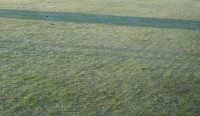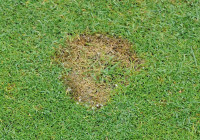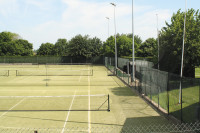January Tennis Diary
 January's weather can be fairly unpredictable, with snow and rain, along with freezing temperatures that are not always conducive to your planned winter maintenance regimes. Many grounds may well be frozen or saturated, preventing you from doing any work to the courts.
January's weather can be fairly unpredictable, with snow and rain, along with freezing temperatures that are not always conducive to your planned winter maintenance regimes. Many grounds may well be frozen or saturated, preventing you from doing any work to the courts.
Clay soils at this time of the year can become plastic (de structured) especially after a lot of heavy rain. Whilst in this state the court is prone to damage from foot and mechanical activities. It is usually best to stay off the courts and refrain from doing any work until it has drained and the surface has dried.
Ideally, you will have aerated in November with a suitable solid tine spiker achieving a depth of penetration between 100-150mm. This operation will have helped increase the porosity of your soil profile and will have aided surface drainage.
With average soil temperatures hovering and remaining around 5 degrees C there will be little or no likelihood of any grass growth until the spring. However, climatic conditions will vary during January, possibly initiating outbreaks of disease.
January is a good time, whilst it is quiet, to plan and get yourself organised. What are your targets for this year? What do you want to achieve? Have you organised your spring renovation works? Have you ordered materials and machinery for the forthcoming season?
Key Tasks
Cultural Practices
Keep off the courts altogether if the ground is frozen - you will severely damage the grass plant by trying to do any work when the ground is in this condition. If conditions allow, you can consider:-
Daily brushing will help disperse early morning dews and help dry out the sward, thus reducing the amount of surface leaf moisture content that can initiate an outbreak of fungal disease. Brushing also helps stand the sward upright and increase air flow around the grass plant.
It is also important to try and keep the the top 50mm of the soil profile free draining, this is achieved by keeping the surface open to allow gaseous exchange, thus preventing anaerobic conditions prevailing. The surface is kept open by a programme of aeration techniques, varying the type and size of tines used.
 For shallow aeration the use of a sarrel roller is sufficient, however you may need to go deeper by using either pedestrian or tractor mounted aerators fitted with longer tines, which can be selected to achieve depths of aeration from 100-300mm. Care should be taken when undertaking these tasks, trying to aerate when the soil is wet or saturated can cause greater problems such as smearing and compaction.
For shallow aeration the use of a sarrel roller is sufficient, however you may need to go deeper by using either pedestrian or tractor mounted aerators fitted with longer tines, which can be selected to achieve depths of aeration from 100-300mm. Care should be taken when undertaking these tasks, trying to aerate when the soil is wet or saturated can cause greater problems such as smearing and compaction.
Mowing heights: The sward should be maintained at its winter height of cut between 12-18mm. The use of a rotary mower can be ideal for topping off and, at the same time, cleaning up any surface debris.
Drainage: Inspect drainage outfalls, channels and ditches. Ensure that they are working. Renew or repair any damaged or problematic drainage systems.
Diseases: Keep an eye on fungal disease attack, and use approved fungicides to treat infected areas. Any mild and wet weather will certainly provide the ideal climatic conditions for diseases. Regular brushing or switching off the dew in the mornings will reduce the chance of fungal attack.
Ongoing work
Tennis structures: Inspect stored posts, nets, seating and notice/score boards. Replace with new equipment if required. Repair any damaged fencing.
Litter: Inspect and remove debris from playing surface - litter or any wind blown tree debris, twigs and leaves. Leaf debris can be a problem during the winter months. It is important to sweep and clear the leaves off the courts as an accumulation of wet leaves will damage the grass surface.
 Machinery, repairs & maintenance: Service and repair damaged machinery. Maintain material stocks and order any other consumables required.
Machinery, repairs & maintenance: Service and repair damaged machinery. Maintain material stocks and order any other consumables required.
Artifical surfaces: Artificial tennis surfaces also need attention. Regular brushing is essential to keep them clean and free from contaminations. Sand filled/dressed carpet systems also require regular brushing to keep them clean and to redistribute sand infill materials.
Algae can often be a problem at this time of the year on artificial playing surfaces. Regular brushing and fungicide treatments may be required to reduce and remove algae growth on the courts. You should use approved chemical products when treating algae problems.
For additional information see following link Sports Diaries
